What is Power Play in Cricket? Learn more about its rules and importance
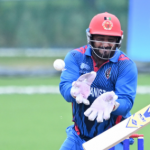
What's Power Play in Cricket
Power play in cricket refers to the maximum number of defensive players that the defending side can arrange outside the 30-yard circle at different stages of the game in a specific round of limited-overs games (such as One-Day Internationals and Twenty20). It aims to create more scoring opportunities for the batting team by adjusting the defensive layout while maintaining the balance and rhythm of the game. The Power Play rules not only increase the viewing and tension of the game, but also encourage the batting team to attack more actively, while also placing higher demands on the defensive team's strategy and execution. By adjusting the layout of the defenders, the Power Play rules help balance the power balance between the two sides of the game, making it more fair and fun.

The History and Origin of Power Play
With the continuous development of cricket matches, the attacking team has gradually explored various efficient scoring strategies. In timed matches such as ODI, in order to maximise the use of limited game time, the attacking team will attempt to concentrate their firepower during specific stages, breaking through defence by increasing attack intensity and variation. This strategy is similar in effect to "Power Play". Faced with the strong offensive of the attacking side, the defending side will also adjust their strategies accordingly, such as increasing the number of defensive players off the field, changing the pitching style of the bowler, etc., to cope with the attacking side's "Power Play" style attack.
Rules of Power Play
Power Play Rules in ODI Cricket
1. Defensive player quantity restriction stage:
At certain stages of the game, the number of defensive players that the defending team can arrange outside the 30 yard circle will be limited.
2. Offensive strategy concentration period:
The attacking team will use these time periods to concentrate their firepower for a powerful attack, attempting to accumulate points through precise hitting and fast running. The attacking team may send their best technical hitters to play during these time periods to maximise their scoring potential.
3. Defenders adjust their response:
The defending team will closely monitor the attacking team's strategy and performance, and adjust their defensive layout as needed. The defending team may change pitchers, alter pitching techniques, or strengthen defence in specific areas to counter the attacking team's attacks.
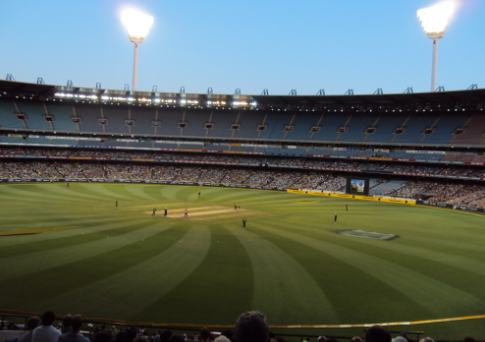
Power Play Rules in T20 Cricket
1. Limit on the number of defensive players:
At certain stages of the T20 game, the number of defensive players on the field may be limited, especially the number of defensive players outside the 30 yard circle.
2. Enhanced attack for specific rounds:
In some T20 matches, specific rounds may be set up requiring the attacking team to concentrate their firepower for a strong attack.
3. Limitations on pitching method or speed:
In some T20 games, in order to increase the scoring opportunities of the attacking team, restrictions may be placed on the pitching style of the defending team, such as prohibiting pitchers from using certain types of pitches. Alternatively, in order to encourage a faster pace of the game, it may be stipulated that pitchers must reach a certain standard of pitching speed in each round.
4. Tactical pause or adjustment:
Although not a direct 'Power Play' rule, T20 matches typically include opportunities for tactical pauses or adjustments, allowing coaches and players to make strategic adjustments at critical moments.
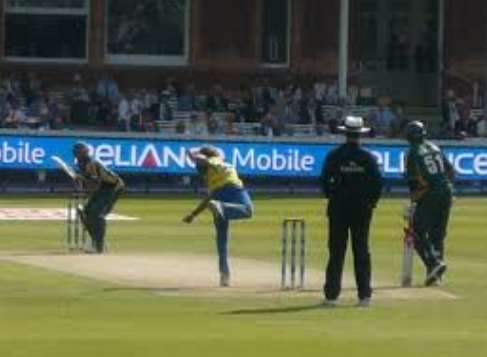
Power Play Rules in 100-Ball Cricket
1. Limit on the number of defensive players:
At one or some specific stages of the game, the number of defensive players on the field may be limited, especially the number of defensive players far from the pitcher's area. This will create more attacking space for the attacking team and increase scoring opportunities.
2. Enhanced attack during specific time periods:
The competition may be divided into several time periods, with one or several time periods designated as the 'enhanced attack' period. During these periods, the attacking side will concentrate their firepower on a powerful attack, attempting to quickly accumulate points in a short period of time.
3. Limitations on pitching method or speed:
In order to increase the scoring opportunities of the attacking team, the pitching style or speed of the defending team may be subject to certain limitations. For example, prohibiting pitchers from using certain difficult to hit pitching techniques, or requiring pitchers to maintain a certain pitching speed.
4. Tactical pause or adjustment:
Although 'Power Play' typically refers to specific time periods or rule settings during a game, tactical pauses or adjustments can also be seen as opportunities for the attacking team to prepare for the upcoming offensive climax. Coaches and players can take advantage of these opportunities to make strategic adjustments and optimizations.

The Importance of Power Play in cricket
Enhance the scoring opportunities of the attacking team
Limit on the number of defensive players: During the Power Play phase, the number of defensive players in specific areas may be restricted, creating more attacking space and scoring opportunities for the attacking team. This allows the attacking team to adopt more aggressive hitting strategies and attempt to achieve high scores.
Attack focused firepower: The Power Play phase is usually considered the period when the attack focuses its firepower on a powerful attack. The team will send the best hitter on the field and strive to quickly accumulate points through precise hitting and fast running, laying the foundation for victory in the game.
Tactical adjustment and strategic deployment
Pitching style restrictions: In some cricket matches, the Power Play phase may impose restrictions on the defensive pitching style, such as prohibiting pitchers from using certain difficult to hit pitching styles. This requires the attacking team to conduct in-depth research on the defending team's pitching strategy during the preparation stage and develop corresponding countermeasures.
Rhythm control: The Power Play phase is also a crucial moment for both teams to control the pace of the game. The attacking side needs to seize opportunities and use the limitations and loopholes of the defending side to score efficiently; The defensive team needs to constantly adjust their defensive layout and pitching strategy to contain the offensive team's attacks.
Enhance the viewing experience and tension of the competition
Fast scoring and intense competition: Due to the increased scoring opportunities for the attacking team in the Power Play stage, the game in this stage is often more intense and exciting. Viewers can appreciate high-level hitting skills and quick running to score, experiencing the unique charm of cricket.
Psychological warfare and morale motivation: The Power Play stage is not only a competition of technology and tactics, but also a competition of psychology and morale. The attacking side needs to remain calm and focused under pressure, while the defending side needs to boost morale and undermine the opponent's confidence through tenacious defence.
Tactical flexibility and adaptability
Adapt to different game formats: Power Play rules may vary in different cricket game formats, such as ODI, T20, and 100 Ball Cricket. This requires teams and players to have a high degree of tactical flexibility and adaptability, and be able to make corresponding adjustments and responses according to the specific situation and rule requirements of the game.
Summary of Power Play in Cricket
Power Play is a specific stage or rule setting in cricket matches that primarily enhances the attacking team's scoring opportunities by limiting the number of defensive players in a specific area. The purpose is to maintain the balance of the game, improve the attacking efficiency and scoring ability of the attacking team, thereby increasing the viewing and tension of the game.
Power Play, as an important stage or rule setting in cricket matches, has a significant impact on the direction and outcome of the game. It not only provides valuable scoring opportunities for the attacking team, but also tests the tactical deployment, psychological resilience, and adaptability of both teams. In the game, both teams need to attach great importance to the importance of the Power Play stage and make corresponding preparations and responses according to specific situations.
Related News
-
Top 15 Players with Most Sixes in International Cricket (All Formats)
Cricket News 23-Oct-2024 14:23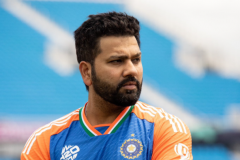
-
Highest Partnership in IPL 2024: Virat Kohli & Faf du Plessis Lead the Way
ipl cricket 22-Oct-2024 13:04
-
Where to Watch the India National Team vs New Zealand National Team 2024 Test Match Live Streaming in India
Cricket News 22-Oct-2024 12:43
-
Top 25 Fastest Century in ODI: Who Made Their Mark in Cricket History?
ODI cricket 21-Oct-2024 12:27
-
Who Is the Prince of Cricket Throughout History? Let's Learn About This Legendary Player
cricket 19-Oct-2024 13:08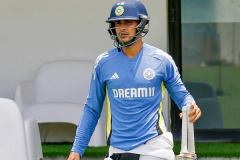
-
How to Watch the ICC Women's T20 World Cup 2024 Live Streaming: Get the Best Viewing Guide Here
T20 Cricket 19-Oct-2024 08:48
Latest News
-
Afghanistan A vs Hong Kong Prediction - ACC Men's T20 Emerging Teams Asia Cup 2024 Tips
cricket prediction 22-Oct-2024 15:23
-
India vs New Zealand 2024 2nd Test Match Prediction: Who Will Win Match
Test Cricket 23-Oct-2024 07:44
-
South Africa Women vs New Zealand Women Prediction - Women's T20 World Cup Tips
cricket prediction 22-Oct-2024 08:22
-
How to Watch the ICC Women's T20 World Cup 2024 Live Streaming: Get the Best Viewing Guide Here
T20 Cricket 19-Oct-2024 08:48
-
Sri Lanka vs West Indies Prediction - 3rd Match of T20I Tips
cricket prediction 18-Oct-2024 06:58
-
Where can I watch the CSA T20 Challenge 2024 Live Streaming? Here is a guide to watching CSA T20 Challenge 2024
cricket 17-Oct-2024 13:19



